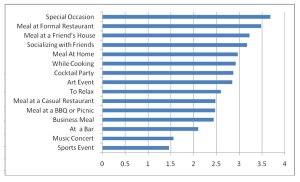 Spectrum Wine Auctions’ Second Anniversary Auction will take place December 3rd & 4th at 11:00 a.m. at the Grand Hyatt Hong Kong Hotel.
Spectrum Wine Auctions’ Second Anniversary Auction will take place December 3rd & 4th at 11:00 a.m. at the Grand Hyatt Hong Kong Hotel.
All registered bidders are invited to celebrate the auction with a Champagne brunch featuring pours of Krug and Cristal, which starts promptly at 11:00 a.m. The two-day event features a total of 1,631 lots of rare and collectible wines, and carries a pre-sale estimate of HK $50.4 million.
Highlights include more than 600 lots of top-shelf Burgundy including nearly 175 lots of Domaine de la Romanée-Conti, as well as H. Jayer Richebourg, Domaine Méo-Camuzet, Domaine Leroy. The sale also offers several cases of First Growth Bordeaux in OWC.
Bids may be placed live in the auction room, online, by phone, in advance via fax or through Spectrum Wine’s new iPhone/iPad bidding app. Interested buyers may preview 360-degree photographs of bottles from each lot prior to the sale, and may request a complimentary catalog at spectrumwine.com.
Liz Palmer
@champagnehouses




